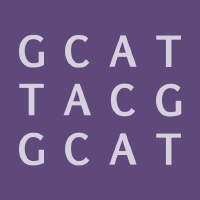Topic Menu
► Topic MenuTopic Editors



2. Instituto Nacional de Biodiversidad (INABIO), Quito 170505, Ecuador
Diversity, Ecology, and Genetics of Invasive Plants
Topic Information
Dear Colleagues,
Invasive alien species (IAS) are those plants and animals introduced accidentally or deliberately into an area where they do not normally occur and where they expand, causing serious negative consequences for the environment, for the ecosystem services and even for the economy and human health. The spread of alien species is a growing threat to our planet’s biodiversity (IAS are already considered the second cause of biodiversity loss); indeed, IAS have become important components of the floras and faunas of the world, with their occurrence having grown unprecedentedly over the past few decades. Sadly, the threat that they represent might considerably increase in the near future as the global change is consolidating: the growing urbanization, the increase of global trade, and global warming will definitely help alien species to establish in new ranges.
This topic is aimed to collect scientific contributions on diversity, ecology, and genetics of (actual) invasive alien plants or plants still in early stages of invasion (casual, naturalized) of any taxonomic group and of any geographic region.
Papers on diversity may cover aspects such as early detection and inventorying of alien flora (e.g. checklists, catalogues, or floras), identifying areas of IAS richness, identifying origin and introduction pathways, or delineating temporal trends of invasion. Papers dealing with taxonomic questions are also welcomed.
Ecological aspects of IAS may include demography, reproduction biology, ecological niche modelling, plant-plant or plant-animal interactions, risk analysis, and community ecology, but not physiological and/or biochemical aspects.
As for genetics, papers could be focus on population genetics, phylogeography, phylogeny, or landscape genetics and genomics, but also on changes in the structure, composition and organisation of the genome (e.g. hybridization, polyploidy, chromosome rearrangements).
Dr. Jordi López-Pujol
Dr. Neus Nualart
Dr. Roser Vilatersana
Dr. Ileana Herrera
Topic Editors
Keywords
- ecology
- exotic
- genetic diversity
- invasive alien species
- naturalized
- niche modelling
- weeds
Participating Journals
| Journal Name | Impact Factor | CiteScore | Launched Year | First Decision (median) | APC |
|---|---|---|---|---|---|

Diversity
|
2.4 | 3.1 | 2009 | 17.8 Days | CHF 2600 |

Ecologies
|
- | - | 2020 | 19.8 Days | CHF 1000 |

Plants
|
4.5 | 5.4 | 2012 | 15.3 Days | CHF 2700 |

Genes
|
3.5 | 5.1 | 2010 | 16.5 Days | CHF 2600 |

Sustainability
|
3.9 | 5.8 | 2009 | 18.8 Days | CHF 2400 |

MDPI Topics is cooperating with Preprints.org and has built a direct connection between MDPI journals and Preprints.org. Authors are encouraged to enjoy the benefits by posting a preprint at Preprints.org prior to publication:
- Immediately share your ideas ahead of publication and establish your research priority;
- Protect your idea from being stolen with this time-stamped preprint article;
- Enhance the exposure and impact of your research;
- Receive feedback from your peers in advance;
- Have it indexed in Web of Science (Preprint Citation Index), Google Scholar, Crossref, SHARE, PrePubMed, Scilit and Europe PMC.


